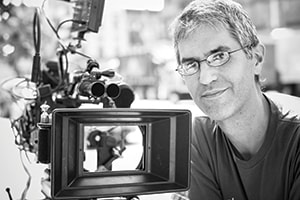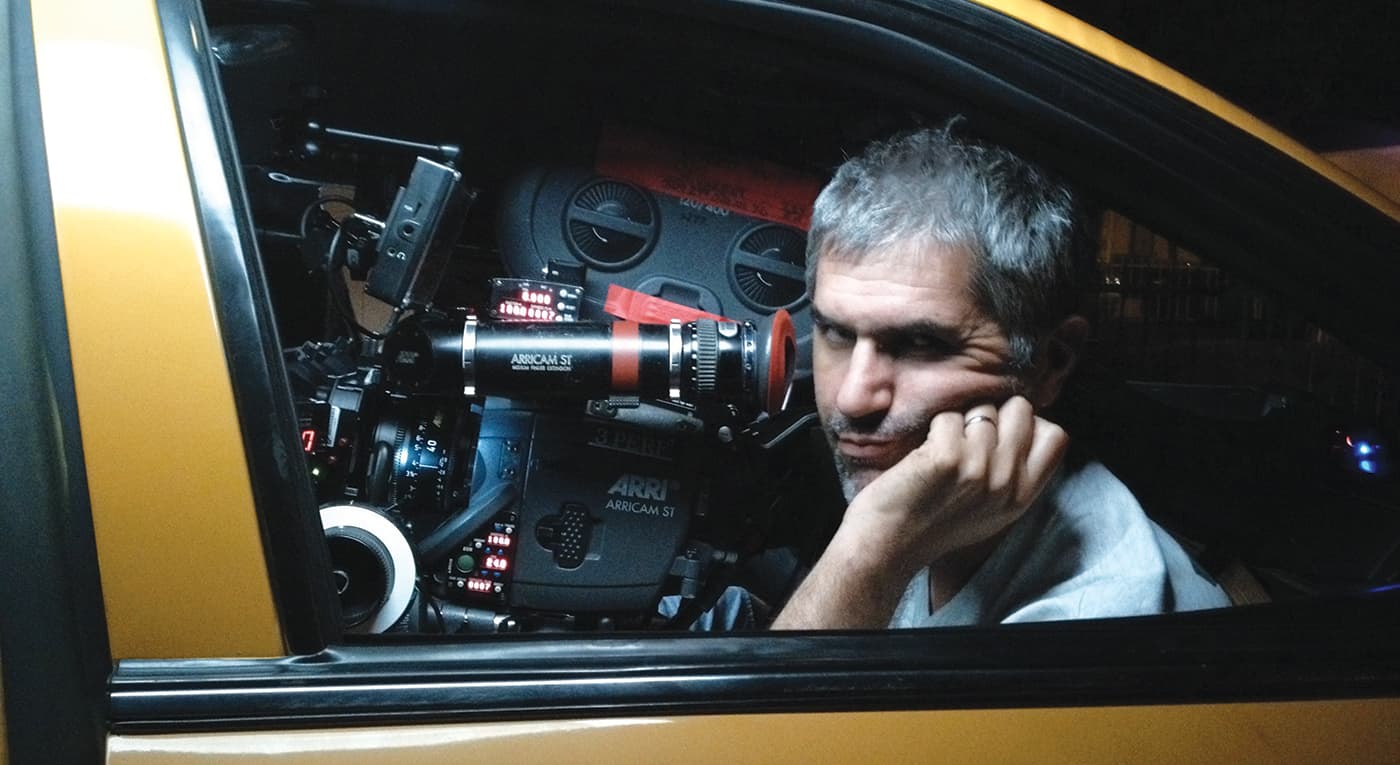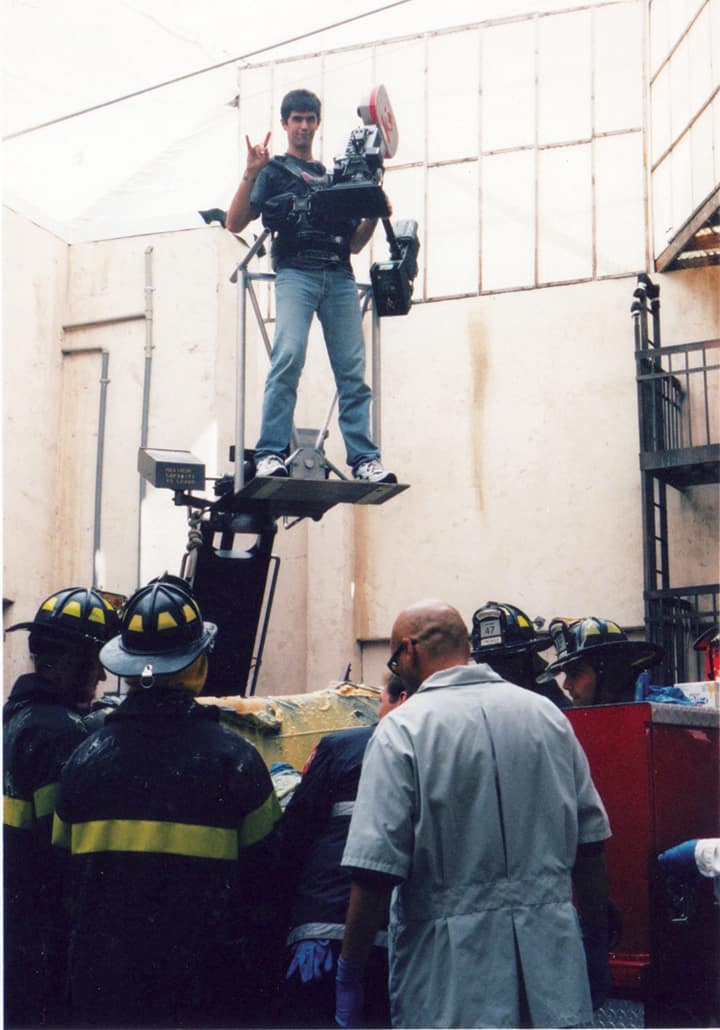
Safety On Set – An Operators’ Responsibility
Above photo: Waiting for first team on St. Vincent, photo by Sean Moe
By Dave Chameides, SOC
When I was younger I wasn’t very interested in safety. After all I was 20 something years old, a young (hopefully) up-and-coming Steadicam operator, and I was invincible. We were all that way at some point, right? So we stepped a little closer to the edge or a few inches towards that fire gag in order to get “the shot” – that one moment of cinematic genius that was going to put us on the map and make our careers.
EARLY EXPERIENCES
I can remember a point early in my career when I was shooting a film that should have been called No One Will Ever See This Movie, Part II. The DP and the pyro guy came over and placed my camera for an explosion that involved an old pickup truck. While I was psyched to operate the shot, my AC on the day, a 20 plus year veteran, told them we wouldn’t do it because it wasn’t safe. It ended up as a lockoff and a piece of the truck fell inches from our matte box. I can’t say that I would have been hurt had this gentleman not been watching out for our safety that day, but I can’t say I would have come away unscathed either.
THE ROLE OF VETERANS
Thankfully, I’ve not only matured a little bit since then (my wife might disagree), but I’ve also learned a few things after doing, and not doing, some really stupid stuff. And while I’d like to say I owe my survival to incredible wits and intelligence, I know the reality is I’m still here in large part due to the veterans I’ve worked with. If I got too eager, too out of touch, or just too in the moment, they were always there to smack me back into reality and bring me down to earth.
I’m at the point in my career where I recognize that I have become one of those veterans and that part of my job now entails keeping my eyes out for those around me. Crews are getting younger and jobs in many cities are increasingly tougher to find. In some markets work is so plentiful that they are literally pulling people off the street and we’ve all worked with new members who aren’t up to speed yet. So on any given show it’s possible that a large number of our co-workers may not know enough to speak up about a safety concern or, more than likely, they may not want to speak up due to a fear of retribution. That’s where I believe we come in.
OUR RESPONSIBILITY
We operators are accustomed to making our concerns heard on set. While generally these involve the shot we are trying to execute—lights in the frame, flares in the lens, something that doesn’t look quite right —part of our job is to be vocal. It’s understood that we have a direct line of communication to the AD, the director, the DP, the key grip and beyond and we are charged with engaging these individuals on a daily basis. Many on the call sheet may not feel at ease speaking up, and as such, I believe that it is our responsibility to speak on their behalf.
I don’t mean to say that safety is solely an operators’ job because no one person on the crew can ensure that everyone is safe (that would be the job of a safety officer…like they have in Australia…like we should have here!). The safety of the crew falls squarely on the shoulders of every crew member, and while there are certain departments that are more involved in the process, keeping our eyes and ears open and looking out for each other is everyone’s job. But if the people who see issues are afraid to speak up than that system doesn’t work.
OPERATORS AS IMPORTANT COMMUNICATORS
As members of a prestigious craft and an honored institution such as the SOC, I’d like to suggest that each and every one of us pledge to become the mouthpiece for safety on set. We are often in the thick of it, we are well-trained professionals and veterans in the industry, and most importantly, we are charged with speaking up when we see a problem. If it is expected that we make our voices heard when there is a C-stand or a flag in the frame, shouldn’t we be expected to do so when the safety of those around us is at risk as well?
THE PERSONAL TOUCH
To that end I have been starting every job with a note to my crew letting them know how I feel, what I expect of them, and what they can expect from me regarding set safety. I’ve included a letter that follows as a template of sorts. My hope is that many of you will consider adopting this practice and that from here on every member of every camera crew knows that a safety concern will be listened to and investigated. As operators we are in a unique position to call out safety concerns and as such need to start taking that responsibility to heart. Letting our crews know where we stand before the first frame is recorded is, in my mind, the first step towards that end. Hoping you all agree.
Greetings all,
In the last year or so I have taken to contacting crews I am going to be working with and putting something out there before we start the first day. I recognize that many of you have lots of years in the biz under your belts, some more than I, and as such will speak up when you see something unsafe. Having said that, we all know that days are getting longer, budgets smaller, shooting schedules shorter, and we are often asked to work much faster than we’d like to. Sadly, when this happens, safety is one of the first things that ends up getting thrown out the door.
I feel it’s a large part of my job description to speak up if I, or anyone else around m,e feels that we are being put in harms way. If you have an issue that for whatever reason you don’t feel comfortable bringing up, please come to me and you have my word that I will bring it up, leaving your name out of it should you desire. I’ve been blessed to have been making a living this way for 25 years and want to keep that streak going, so your safety is my safety and anything I can do towards that end, I will.
But that’s not to say that I somehow see everything. I’ll keep my eye out for all of you the best I can, and ask that in return, you keep an eye on me as well. We are all only as strong as our weakest link and anyone can get caught up in a situation without realizing what is happening. So please let me know if I’m entering into something that hasn’t been well thought out and I’ll do the same for you.
I haven’t seen a script yet (is there one?) but my guess is we won’t be on any train tracks or in the midst of any military bombing runs. What I can guarantee you though is that everyday we will be working hard and as a result people will be driving home tired. This, in my opinion, is the single greatest threat we each face on a day-to-day basis and it’s the one that scares me the most. Even working a “short” day of 10-12 hours can be problematic depending on turning around to nights and so many other factors. So if there is one thing that you carry forward from this email it’s to not take this very real threat to your safety lightly and to ask for a ride or a hotel. If I see anyone who is making the wrong decision to drive home I’ll certainly bring it up to you and if you see me doing so I’d request that you do the same.
Finally, if you haven’t done so already, please consider downloading the ICG Safety App and/or the Set Safety App. Both have safety hotline phone numbers and the CSATF Safety Bulletins embedded within and can come in handy should the need arise.
Thanks for your time and I’ll try to shower and/or deodorize as often as possible for the sake of everyone involved.
Dave
 Dave Chameides, SOC
Dave Chameides, SOC
Dave Chameides, SOC is an A camera/steadicam operator with 25 years experience in the industry. He has won two Primetime Emmy Awards for his work and was nominated as SOC Operator of the Year in 2014 for the feature film St. Vincent. In his spare time, Dave, also known as Sustainable Dave, teaches environmental education in schools all around the country. His message of “Want Less” has been heard by half a million young people around the world and his story has been carried in newspapers, magazines, TV shows, and beyond. He lives on the East Coast with his wife and two kids and their fairly stupid dog.
Photo by Curt Schaller
Read More Stories from Camera Operator
Print and Digital Versions Available





